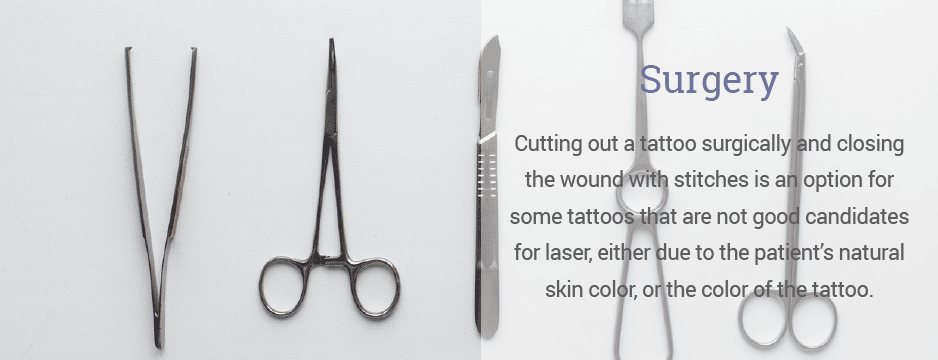If you’re considering a tattoo removal, consult with your dermatologist even if you don’t plan to start right away. Many factors affect who is a good candidate for which treatment and also affect the timing of treatments. Factors such as natural skin color, recent sun exposure, size and color of the tattoo, and smoking history, all influence your options for best possible outcome. Here’s a guide to help you understand your choices.
Lasers work by the phenomenon of photothermolysis, which means that a light beam (photo) hits a specific pigment target and heats it up (thermo), causing it to break apart into microscopic bits (lysis) that are absorbed into the bloodstream and removed from the body. The faster the pulse of energy is delivered, the less the surrounding tissue absorbs unwanted heat, and the less damage there is to normal skin.
Q-switched Nanosecond Lasers: Laser technology for tattoo removal has seen great advances over the years. Initially dermatologists used “continuous wave” CO2 or argon lasers, which heated the surrounding tissue excessively leading to higher risk of burning and scarring. Newer Q-switch technology allows the energy wave to target the pigment in the tattoo with less harm to the skin around it by changing the pattern of how the energy is delivered. The most common lasers today use Q-switched wave shapes delivering laser pulses that each last a nanosecond (one billionth of a second).
Q-switched Picosecond Laser: Until very recently, nanosecond technology was state of the art, but in 2013, the FDA cleared the PicoSure™ Q-switched alexandrite laser, the only laser in the world that uses picosecond pulse durations (one trillionth of a second). This much shorter pulse duration hits the pigment particles faster and harder so they break into even smaller pieces which allows the body to clear the ink faster, with less damage risk to the surrounding skin than with nanosecond lasers. The picosecond laser is also more effective at removing difficult colors, and is associated with less discomfort after each session.
Surgery

Cutting out a tattoo surgically and closing the wound with stitches is an option for some tattoos that are not good candidates for laser, either due to the patient’s natural skin color, or the color of the tattoo. Small tattoos can be excised in a single session, but there is no getting around the area having a linear surgical scar after healing. Larger tattoos may require “serial excision” in which a wedge is cut out from the center of the tattoo and allowed to fully heal, before the process is repeated over and over until the tattoo is gone. Of course this process may take many months, allowing for full healing time between.
Dermabrasion
Dermabrasion is a process of medically-controlled sanding of the skin. Unlike microdermabrasion that is popular in spas, dermabrasion is a more aggressive, deeper process that literally rubs off the outer layers of skin, eventually removing the cells that contain pigment. Since some of these cells can be quite deep, dermabrasion has a risk of scarring and also leaving areas of skin that have lost their own natural pigment after healing.















Leave A Comment